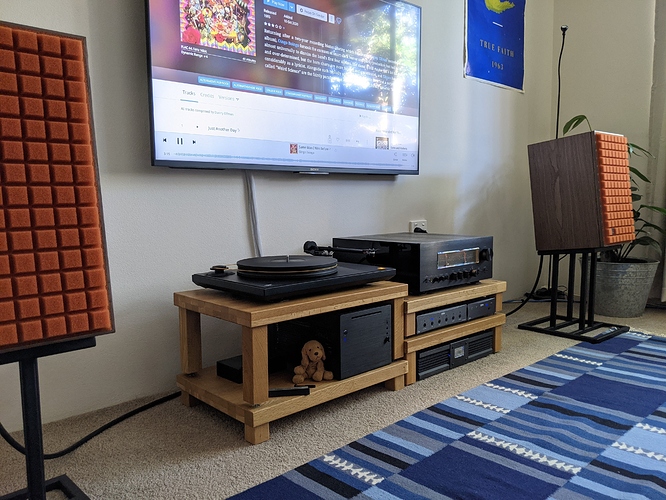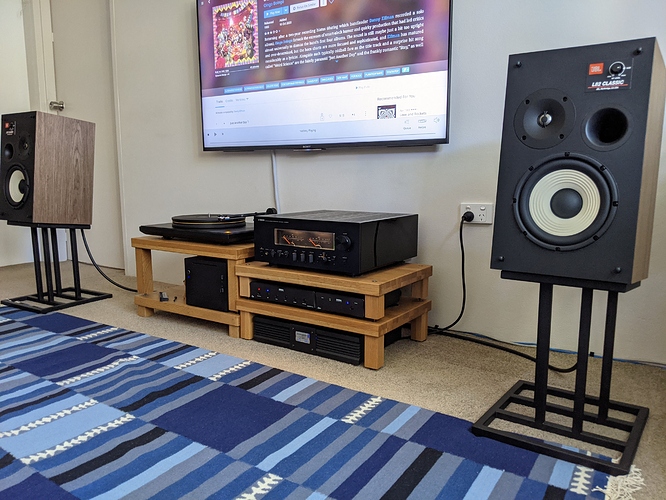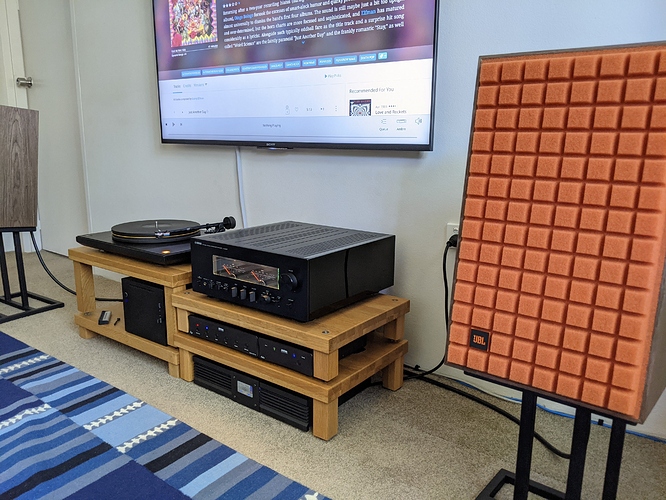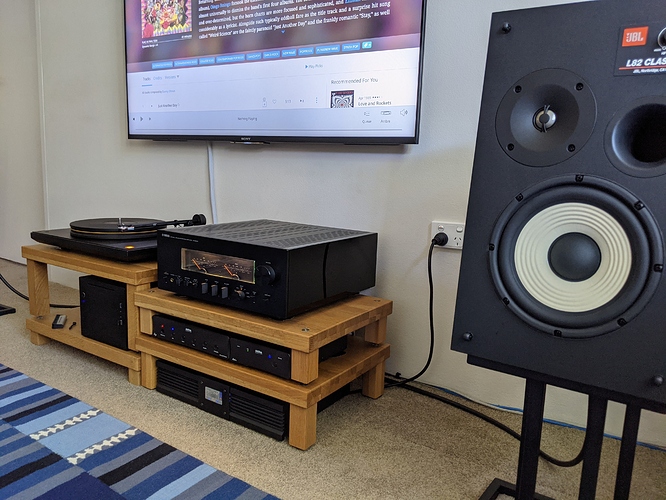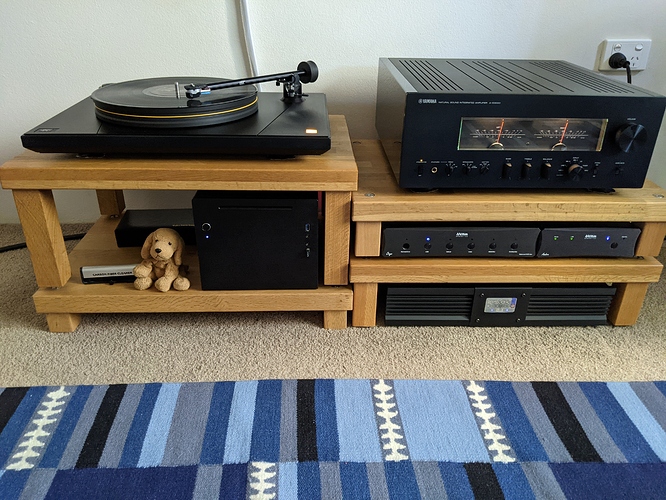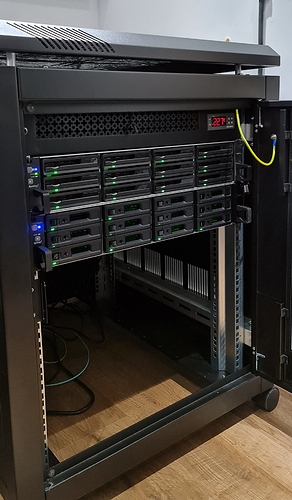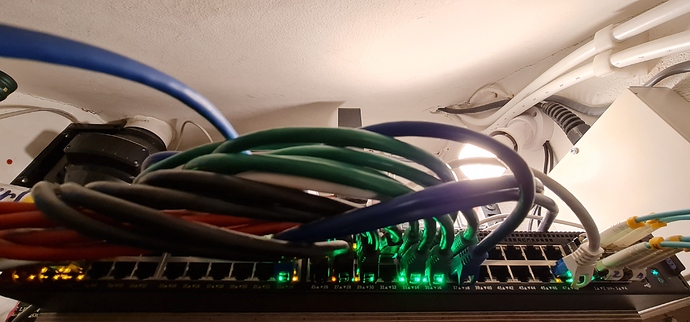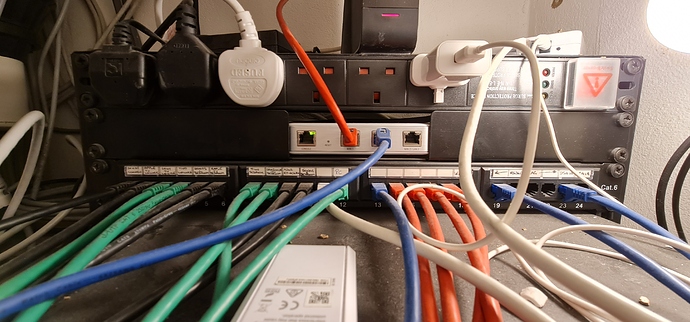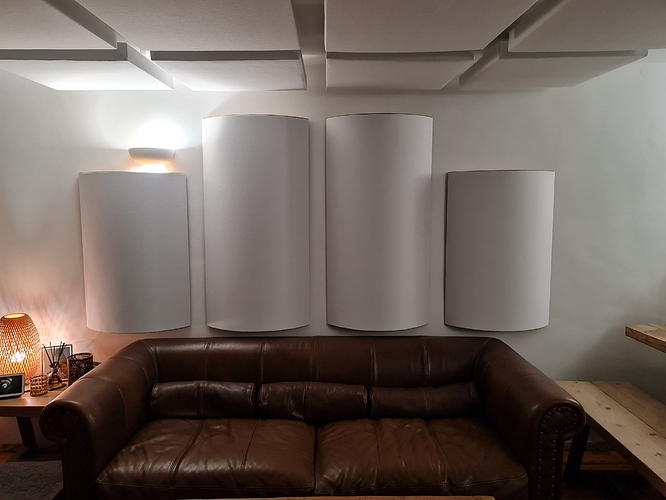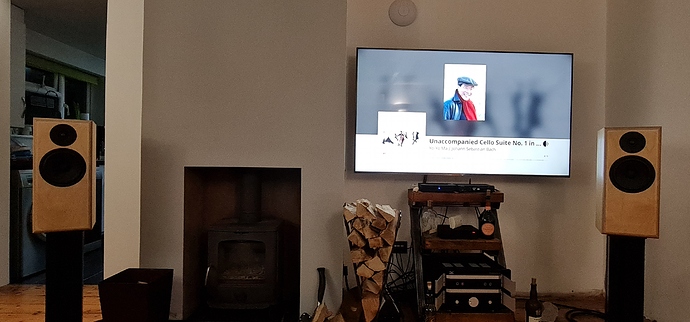I’ve tried REW through Roon. I spent a long time measuring and correcting and a short while fairly happy with the results. I had the desire to extend correction to other sources, e.g. the TV, so went with a MiniDSP Dirac box. For me the Dirac box gives better results than REW and the REW before and afters back that up. This may say more about my lack of REW smarts but MiniDSP and Dirac is a better fit for me.
Thanks @killdozer. Much more helpful than the other member that apparently has the super powers to read my mind and intent. Interested in what others are doing and their success or lessons learned not squabbling with people I don’t even know.
I’m very interested in the subject and have spent a ton of time with REW and my miniDSP UMIK-1. But I did all my learning and teeth cutting before I discovered Roon. So all my work has been done directly with my system/REW/Mic. Things like time alignment of drivers, Minimizing phase growth, Spectrograms and Group delay to calculate delay needed for HF over LF. I’ve not has the spare time to see how Roon and REW work together. Hopefully soon. Maybe it makes the process more streamlined.
For sure REW is a lot to digest. For me it is not the most intuitive either…but I have zero background in this sort of stuff. If you get interested in REW again. Try to pick one part only like flattening the SPL and see how that impacts things like Phase and Group Delay…but don’t worry about making Phase or GD worse. Once you have the PEQs and flattening the curves straitht, start to look at “fixing” phase. Once you have those two pieces mastered turn to HF delay to align with LF driver(s). I found by focusing on one piece of REW at a time the others fell in place. Wrapping your head around the entire process was too much for me.
At this point I know more how to follow the recipe on the side of the cake box, not how to actually bake or why exactly I am doing what I am doing. Still I am having impressive results over previous attempts with High Pass and Low Pass filters and targeting crossover points based on driver specs from the manufacturer. One things is for sure, I’ll never have my main speakers with passive crossover networks again.
I’m selling my Mini DSP because I use HAF’s gent named Thierry. I send him REW results and he builds filters that I install in Roon, in my Core. I can turn them on and off to hear the difference. The MiniDSP converts the signal too many times for me and wastes all my DAC’s efforts.
I googled that and nothing obvious. Can you elaborate?
When I initially got interested in building my 2-way active set up with the Xilica 8080 (excellent piece of kit from Canadian company, BTW) I had a super helpful guy from another audio forum that I’d follow his instructions on how to measure with REW, send him the files and he would send me back various setting for my active crossover. I’m curious to know if Roon is similar. Now I need to do some more digging into Roon. Thanks in advance for the future hours I’ve no doubt already consumed 
RPlace,
Sorry for the lack of detail…HAF= Home Audio Fidelity…https://www.homeaudiofidelity.com. You can read all about what they propose to fix Room Audio challenges. I use a late 2012 MAC Mini (I run this off of 12VDC) for my Roon Server, controlled by my iPad…than I use another MAC Mini (Roon Core) (this one an M1) where I install Thierry’s filters as convolutions for Roon.
Please let me know what more I can maybe help with.
Thanks,
Larry
That looks nice.
I’m using Audiolense XO software to generated 6-way DXD DSP crossover and room EQ impulse responses, 65k taps with driver time alignment… Measured with Earthworks M23R mic…
To do this with REW you need to use RePhase (also free which is nice) so it is possible.
Audiolense is much much more automated than REW+RePhase and Dirac Live even more-so.
When I have more free time, I’ll give REW+RePhase a try, to see if I can end up getting the same measured performance… at least then I can help friends later with this free approach.
Audiolense XO, Acourate, Dirac Live 2+ and @Home_Audio_Fidelity’s service are considered ‘state of the art’ by some experts in this field… but with some blood, sweat and tears I think REW+RePhase can get there too. I’ll find out at some point.
Good morning (in Central Europe and at similar longitude), hello to all others,
I use a macmini (late 2012), which has only been bought to be used as audio server. I changed the HDD into a 1TB SSD containing my whole music library. The OS is Catalina with Roon. Connected to this macmini is a Terratec soundcard with active speakers giving me music while working on desktop.
One endpoint in the living room is a Cubox-i2 connected via Ethernet and set up with debian as roon bridge. The other endpoint in the chilling/sleeping room is a Cubox-i4pro connected via WiFi with debian as roon bridge, too.
Both Cuboxes are connected with an optical cable to a FiiO-DAC and from there to the Amplifier, one an Onkyo, the other a Sony.
On the macmini I’ve installed Remote Buddy, so I can use my Apple IR control(s) at living room and my amazon bluetooth remote control at the chilling room to control the selected zone.
Before I set up the Cuboxes, I used two Airport Express and AirPlay as endpoints, but I got dropouts all the time, even connected via Ethernet. 
My equipment isn’t worth to be presented with pics, so description has to be enough.
My heaven, my escape.
MoFi UltraDeck
Roon
Metrum Acoustics Ambre
Metrum Acoustics Onyx
Yamaha A-S3000
JBL L82 Classic
IsoTek power management
Kool… Awesomeeeeeeeeeeeeeeeee…
The room correction is not related to the source but corrects the impulse response of your speakers/amp in your room.
Once your system is tuned, any source given should work fine.
The process of correction is two main stages: producing the filter and then applying the filter. To apply the filter you need the best possible DSP engine and Roon has a great one that I believe is better than the ones built-in in other boxes. Here you have a scalable computer. in many boxes, you are limited to 10 bands EQ. I am using 3 Convolution filters each with the potential of 20 bands. There is no DSP in the market with 60 bands. In Roon can go higher if you want.
Hi @anon80830635, I understand the principles well enough. My issue was that the REW room correction filters are applied in the Roon core. How to route the digital outputs of my TV and Bluetooth dongle through the Roon core to apply the correction to these sources? My solution was to buy a Dirac box (I was also interested in phase correction) with multiple source inputs.
Very true. As far as I know, there is no way to have other inputs into Roon other its player.
It would be awesome to see Roon grow their vision and make Roon a music hub that can accept other digital inputs. Also, they can acquire or license HQP technology and offer it as built-in in Roon 
So this is a digression, but there is a hack to achieve such things via cast streams (see Icecast as a starting point) but it’s not really a practical solution for the living room at home. Genuinely, thanks for the input, we’re all students in class in many ways…
Yes in any way Roon is more into the high end HD type of music/users. So, we are looking for professionally done input handling so that you can apply all types of DSP in Roon natively.
For the record, I’ve done the same (HAF solution through Thierry). Simple solution that seems to produce good results. He provided me two convolution filters: one for general listening and one specific to the sweet spot (contains a crosstalk filter). It’s interesting, with the crosstalk filter the sweet spot is much improved but it not designed for when I’m walking around my house. Both filters improve the sound (for me it was removing some echo in the lower vocal range, and increasing the soundstage).
Hi. the difference should be more in the bass. It should be a day and night change if you have a powerful amp and speakers.
Doing convolution filters using REW that delivers great improvements without damaging the signal is complex, and requires solid acrostic engineering knowledge and experience. So, out of the box solutions can be handy, but I do not believe they match a professionally done one.
I spend sometimes 2 hours analyzing the filters and doing multiple scenarios before I export them. If you bring 100 people out of which 99 will tell you it is great improvements. The improvements are 3 categories:
- Accuracy in the sound with reference to the mastering
- Much neutral and punchy bass. You feel the drums are in your room.
- Vocal and mids and highs are open and feeling more space and dynamic range.
Not your typical Roon setup here. Once upon a time, I was a paid photographer and I bought a Synology RS3617xs to handle the vast quantities of enormous RAW files generated from a handful of Nikon D800s, provide a fast means of backing them up from a PC and then subsequently backing them up again offsite via Backblaze B2. Why the need for speed? When you get home at 3am after an 18 hour wedding gig, the last thing you want is to wait for another hour while you back up all your CF & SD cards before you can go to bed.
Since then, I’ve added 6 IP cameras, a music library and a Plex server. I have 10 X 4 TB NAS HDDs in RAID 10 - limited redundancy, but I’ve only ever lost 1 drive in 17,000 drive days of operation so far. The NAS connects to an enterprise switch (Dell X1052P) over a 20Gb/s dual fibre 802.3ad LACP LAG, so there’s more bandwidth available than can ever be consumed.
Roon core and database runs on the NAS, but from the RX1217 expansion module on a dual 480GB RAID0 SSD array (backed up daily to the HDD volume and to Dropbox). I’m trying out the new Seagate Nytro 1551 drives here (3 DWPD), 2 million hours MTBF and a 5 year warranty. I reckon I’ll die before either of the drives… Music library runs on 4 X 480GB Seagate Ironwolf 110 SSDs in RAID 0, backed up to the HDD RAID 10 array and also backed up via Backblaze B2. The expansion module also holds a couple of ‘hot spare’ HDDs for the NAS.
Might sound like overkill, but the whole setup cost peanuts compared to an ‘audiophile’ hi-fi system. I’ve been through the pain of lost data once, and only once. Offsite backup is cheap, but offsite data recovery is a last resort - it’s a time consuming and expensive process. Multiple redundancy on-site backup is cheaper and easier with the off-site as a belt and braces.
Anyway, here’s a few photos of my setup:
Server cabinet with temperature controlled roof-mounted cooling fans (I like to tinker)
Dell enterprise switch (bargain used eBay purchase for £213) A new one is about £900. 176GBps switching capacity, 24 x 1Gb ports, 24 x 1Gb PoE ports and 4 X 10 GB SFP+ ports for fibre connection.
Patch panel, Ubiquiti USG and Cloud Key. Everything that I can possibly get a cable to is connected via Cat6 UTP. WiFi is delivered by Unifi AP Pro access points for the devices that can’t be cabled.
My listening room is the lounge, so I have to share it with SWMBO… The room was far too live, so much so that even TV dialog was challenging at times. Mixture of diffusion, absorption and diffsorbtion. I’m still married, so I guess she doesn’t object too much!
HiFi setup is fairly modest. Bluesound Node 2i over Cat6 from the switch to a Topping DX7 Pro (also use it with balanced connected Sennheiser HD580s corrected by Roon convolution filter with a bit of crossfeed) Amp is a DK Design VS.1 Signature MK.III hybrid. Tube preamp stage and monster SS output stage. Speakers are home-built Zaph Audio ZRT 2.0 in sealed enclosures. Scanspeak Revelator and Illuminator drivers with film capacitors and air-cored tight-tolerance inductors.
I’ve heard some very high-priced systems and I don’t feel I’m missing anything right now. Just enjoying the music.
At least you don’t waver on your ideals!! Way to stay committed! Great setup.
Awesome set up. I’m still working up the courage to build my own speakers someday!
SWMBO now there’s an abbreviation I haven’t seen for ages
Ryder Haggard Rules 


